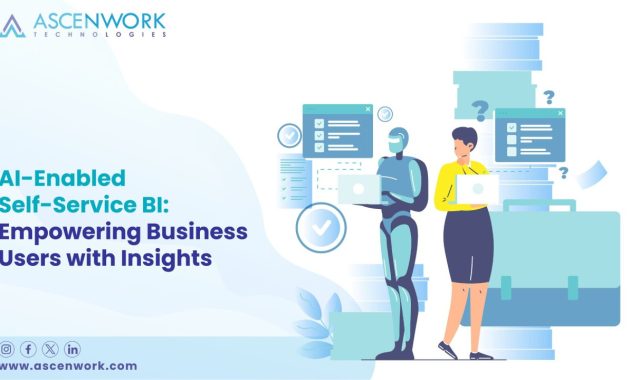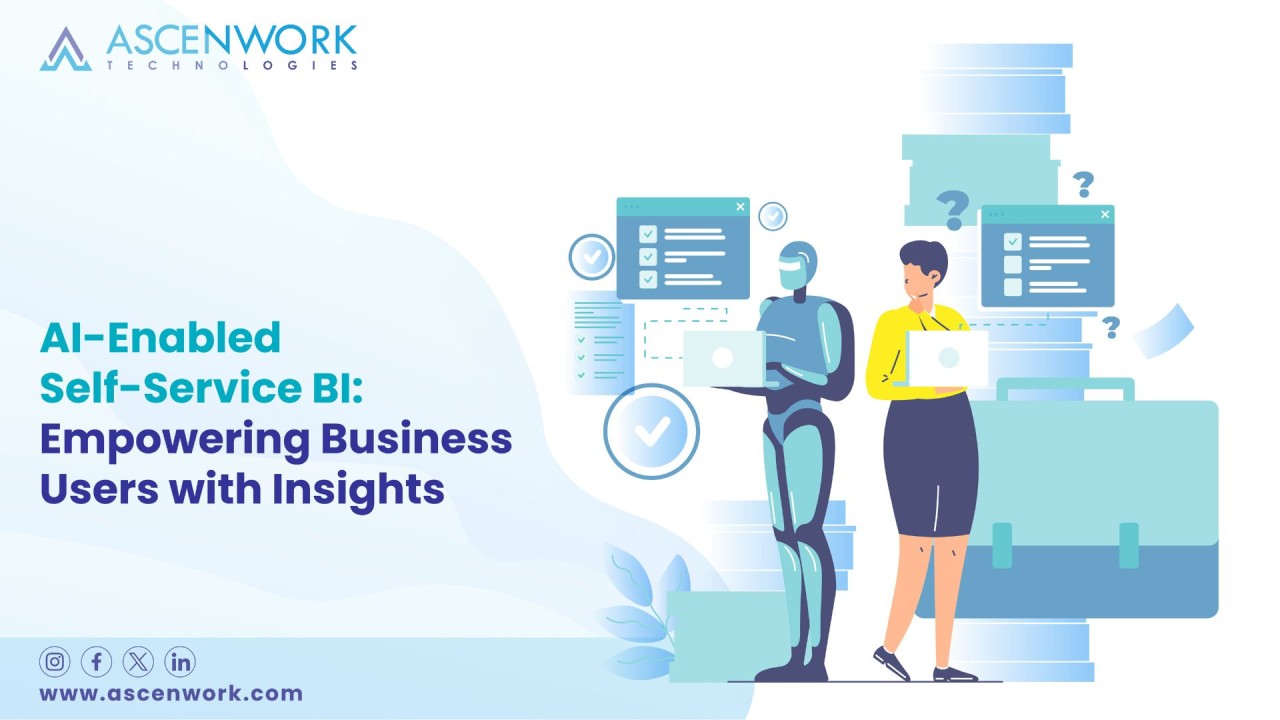
Self-Service Business Intelligence Software: The Marketing Revolution
In today’s hyper-competitive market, marketing teams are under immense pressure to deliver results. They need to understand their customers, optimize campaigns, and prove the return on investment (ROI) of their efforts. This is where self-service business intelligence (BI) software comes in. It’s a game-changer for marketing professionals, offering unprecedented access to data and empowering them to make informed decisions quickly.
The core concept behind self-service BI software is simple: it puts the power of data analysis directly into the hands of the end-user. Instead of relying on IT departments or data scientists to create reports and dashboards, marketers can now explore data, build visualizations, and uncover insights themselves. This agility and autonomy are transforming the way marketing departments operate, fostering a data-driven culture.
This article will delve into the benefits of self-service business intelligence software for marketing, explore key features, and provide practical examples of how it’s being used to drive success. We’ll also discuss the challenges and considerations involved in implementing this technology.
Understanding the Power of Self-Service BI for Marketing
Traditional marketing often relied on intuition, experience, and gut feelings. While these factors still play a role, data has become the cornerstone of modern marketing. Self-service BI software provides the tools needed to harness this power, enabling marketers to make data-backed decisions across all areas of their campaigns.
The benefits are numerous. Marketers can:
- Gain a 360-degree view of the customer: By integrating data from various sources, such as CRM systems, website analytics, and social media, marketers can create comprehensive customer profiles.
- Track campaign performance in real-time: Self-service BI software offers interactive dashboards that display key performance indicators (KPIs) in real-time, allowing marketers to monitor the effectiveness of their campaigns and make adjustments as needed.
- Identify trends and patterns: Advanced analytics capabilities enable marketers to uncover hidden insights, such as customer behavior patterns, market trends, and opportunities for growth.
- Optimize marketing spend: By analyzing the ROI of different marketing channels and campaigns, marketers can allocate their budgets more effectively, maximizing their impact.
- Improve customer segmentation: Marketers can segment their audience based on various criteria, such as demographics, behavior, and purchase history, to create more targeted and personalized marketing messages.
Key Features of Self-Service BI Software for Marketing
Self-service BI software offers a wide range of features designed to meet the specific needs of marketing teams. Some of the most important features include:
Data Integration and Connectivity
The ability to connect to various data sources is crucial. This includes CRM systems (like Salesforce and HubSpot), marketing automation platforms (like Marketo and Pardot), website analytics tools (like Google Analytics), social media platforms, and even spreadsheets. This feature allows marketers to bring all their data into a single platform for analysis.
Data Visualization and Dashboards
Self-service BI software excels at creating visual representations of data. Users can create interactive dashboards with charts, graphs, and other visualizations to easily understand complex information. These dashboards are often customizable, allowing marketers to track the metrics that are most important to them.
Reporting and Analytics
Beyond dashboards, self-service BI software provides robust reporting capabilities. Marketers can generate custom reports to track specific KPIs, analyze trends, and assess the performance of their campaigns. Many platforms offer advanced analytics features, such as predictive modeling and segmentation.
Collaboration and Sharing
Collaboration is key in marketing. Self-service BI software often includes features that allow users to share dashboards, reports, and insights with their team members. This promotes transparency and ensures everyone is on the same page. Some platforms also support data governance features to control access and ensure data security.
Mobile Access
In today’s fast-paced world, marketers need access to their data on the go. Mobile access allows them to monitor performance, make quick decisions, and stay informed, no matter where they are.
Real-World Examples of How Self-Service BI Empowers Marketing
The impact of self-service BI software can be seen across various marketing functions. Here are some examples:
Campaign Performance Analysis
A marketing team uses self-service BI software to track the performance of their email marketing campaigns. They can easily see open rates, click-through rates, conversion rates, and ROI for each campaign. Based on these insights, they can optimize their email content, subject lines, and targeting to improve results.
Customer Segmentation and Personalization
A retail company uses self-service BI software to segment its customer base based on demographics, purchase history, and website behavior. They then use these segments to create personalized marketing messages and offers. This leads to increased engagement and higher conversion rates.
Website Analytics and Optimization
A website uses self-service BI software to analyze website traffic, identify popular pages, and track user behavior. They can then use this information to optimize their website content, improve user experience, and increase conversion rates. They can also identify areas where users are dropping off and make adjustments to improve the customer journey.
Social Media Monitoring and Analysis
A brand uses self-service BI software to monitor social media mentions, track brand sentiment, and analyze the performance of their social media campaigns. They can identify trending topics, engage with their audience, and improve their social media strategy.
Challenges and Considerations When Implementing Self-Service BI
While self-service BI software offers significant benefits, implementing it successfully requires careful planning and execution. Here are some challenges and considerations:
Data Quality
The quality of the data is paramount. Ensure that data sources are accurate, complete, and consistent. Implement data governance policies to maintain data integrity.
User Training and Adoption
Provide adequate training to users on how to use the software and interpret the data. Encourage adoption by highlighting the benefits and providing ongoing support.
Data Security and Governance
Implement robust security measures to protect sensitive data. Establish clear data governance policies to control access, ensure data privacy, and comply with regulations.
Choosing the Right Software
Select a self-service BI software solution that meets the specific needs of your marketing team. Consider factors such as ease of use, features, scalability, and integration capabilities. Research different options and compare their features and pricing.
Integration with Existing Systems
Ensure that the self-service BI software integrates seamlessly with your existing marketing technology stack. This will enable you to bring all your data into a single platform and gain a holistic view of your marketing performance.
The Future of Marketing and Self-Service BI
The future of marketing is data-driven, and self-service business intelligence software is at the forefront of this transformation. As marketing becomes increasingly complex, the need for data analysis and insights will only grow. By empowering marketers with the tools they need to understand their customers, optimize their campaigns, and measure their results, self-service BI software is paving the way for greater marketing success.
Self-service BI software is not just a trend; it’s a fundamental shift in how marketing is done. Businesses that embrace this technology will be better positioned to compete in the years to come.
Data accessibility and usability are vital. These technologies enable marketers to be more agile and responsive to market changes. The ability to quickly analyze data allows for rapid iteration and optimization of campaigns.
The trend is toward more sophisticated analytics. Machine learning and artificial intelligence will play a bigger role. Self-service business intelligence software is evolving to integrate these advanced capabilities. This will further empower marketers to gain deeper insights and make more intelligent decisions.
The adoption of self-service BI software will continue to grow. The demand for skilled professionals who can leverage these tools will also increase. Marketers who master these technologies will be in high demand.
As the market evolves, vendors will continue to innovate. They will add more features and improve user experiences. This will make the technology even more accessible and powerful.
Conclusion: Embracing the Data-Driven Marketing Revolution
Self-service business intelligence software is transforming marketing. It empowers marketers to be data-driven and successful. By providing easy access to data, these tools enable informed decision-making. They also improve campaign performance and drive ROI.
By embracing this technology, marketing teams can gain a competitive edge. They can also adapt to the ever-changing market landscape. The future of marketing is bright. And it is powered by data.
The transition to a data-driven approach is essential. This transition requires the right tools, training, and a supportive culture. The benefits of this approach are clear. Companies that invest in self-service business intelligence software are investing in their future.
Self-service business intelligence software is not just a tool. It’s a strategic asset. It is essential for marketing success in the modern era. It is the key to unlocking the full potential of marketing efforts. It is a critical tool for driving growth and achieving business goals.
[See also: Best BI Software for Small Businesses, Marketing Analytics Best Practices, Data Visualization Techniques for Marketers, Choosing the Right Data Sources for Marketing]

